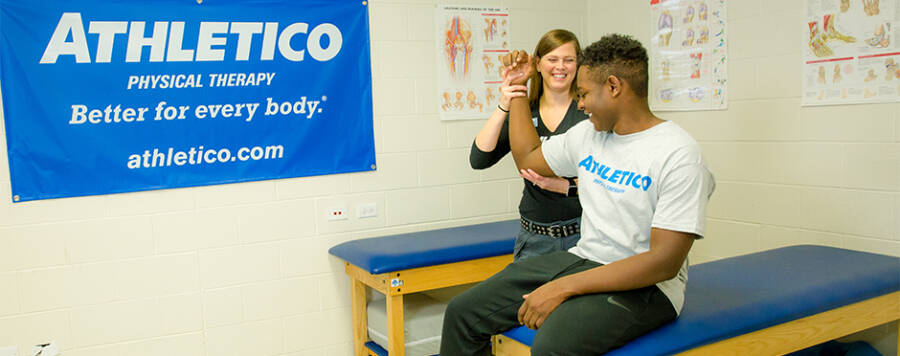The Role Athletic Trainers in Today’s Society
As people become more active and as kids play and perform harder, injuries are prone to increase. Specialization in athletics is becoming more popular trend nation wide. March is National Athletic Training Month. Athletico Physical Therapy and the National Athletic Training Association want you to know how a certified athletic trainer can help you stay healthy and perform at your best.
Here are some of the top injuries and problems athletic trainers treat, as well as tips on how to address them:
ACL Injuries
A tear in the anterior cruciate ligament (ACL) – the main connective tissue that holds the knee together – is the most common injury to this joint. There are an estimated 200,000 ACL tears each year, sustained on the basketball court, the gymnastics mat, at the ballet barre or by stepping in a pothole during a morning run. Rehabilitation from an ACL tear includes strengthening the muscles that support the knee – the quadriceps and hamstrings in particular – as well as improving flexibility. Learning ACL exercises to target weak muscle areas and making the knee stronger and more flexible can help prevent these injuries.
Low Back Pain
Almost everyone will experience pain in their lower back at some time due to strained muscles or decreased flexibility. Low back pain is extremely common, especially among people who do a lot of heavy lifting on the job – from a construction worker to a mom carrying groceries and her not-so-little one! A good rehabilitation program is key to alleviating back pain and preventing worse problems, such as an out-of-alignment vertebra or herniated disc. Correcting this pain includes developing proper body mechanics, such as correct posture and lifting, strengthening the core and aerobic conditioning.
Rolled Ankle
Stopping fast during sports or even stepping off a curb awkwardly can lead to a rolled ankle and stretched ligaments. This is commonly known as a sprained ankle. The American College of Sports Medicine estimates that 25,000 Americans sprain their ankles every day and note that as many as 40% are poorly treated and misdiagnosed. RICE – rest, ice, compression and elevation – is the best strategy for treating this injury immediately. Taping and bracing of the ankle can provide support and prevent future problems.
Rotator Cuff Injury
An injury or tear to the rotator cuff – a group of four muscles and tendons that help your shoulder move – can happen suddenly, such as from a lineman falling on a shoulder, or build up over time from repeated motion, such as from a swimming stroke. The injury is one of the most common conditions of the shoulder and most often afflicts people between the ages of 40-70. Rotator cuff exercises that focus on range of motion, stretching and strength-building are the keys to treating the injury and preventing further problems.
Concussion
Concussions have increasingly been in the news, bringing attention to the importance of prevention, as well as how to assess and treat the 1.6 million to 3.8 million sports-related injuries that occur every year. Medical evaluation is crucial, and certified athletic trainers know the symptoms, can perform a special computerized assessment, guide a safe recovery and help prevent re-injury. Post-concussion management includes refraining from any physical activity as well as mental activities such as texting, reading video games or computer use until symptoms improve and the patient can be re-evaluated. Check out these Concussion Myths and Frequently Asked Questions.
Ulnar Collateral Ligament Injury (Tommy John Surgery)
Throwing and racquet sports – from baseball to tennis – can be tough on the elbow, leading to injury of the ulnar collateral ligament, which connects the upper and lower parts of the arm. It’s the most commonly injured ligament among throwers and severe cases may require surgical replacement or repair of the ligament (named after Los Angeles Dodgers pitcher Tommy John). The lengthy rehabilitation includes improving flexibility and range of motion, wrist, forearm and elbow-strengthening and readjusting mechanics. Prevention focuses on mechanics, flexibility and strength, and sometimes includes thermal or electrical treatments to promote healing, as well as splinting to rest the muscles.
Athletico provides free assessments at a location near you. Please click the button below to schedule yours now!
The Athletico blog is an educational resource written by Athletico employees. Athletico bloggers are licensed professionals who abide by the code of ethics outlined by their respective professional associations. The content published in blog posts represents the opinion of the individual author based on their expertise and experience. The content provided in this blog is for informational purposes only, does not constitute medical advice and should not be relied on for making personal health decisions.

 width="900"
height="356"
>
width="900"
height="356"
>
